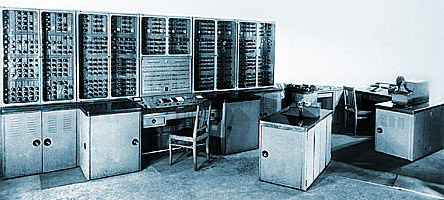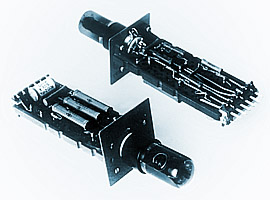Electronic Digital Computers URAL-1
Home → Articles → Ural Family of Computers → Electronic Digital Computers URAL-1
Ivan Vasilyevich Urnev

- Chief designer – B.I. Rameev (Rameev Bashir Iskanderovich). Leading assistant designers: V.S. Antonov, A.I. Lasarev, D.I. Yuditskiy (Yuditskiy Davlet Islamovich), A.N. Nevskiy, V.I. Mukhin, A.I. Pavlov, A.G. Kalmykov.
- Basic organization in charge of the computer project and design: SDB-245 (Special Design Bureau – 245) under the USSR Ministry of Instrumentation and Automation Means (MIAM). Final preparations and bringing to serial production was performed by (MIAM) SDB-245’s affiliate in town of Penza.
- Producing plant: Penza Plant of Computing Analytic Machines (under MIAM).
- Completion of design (year): 1955.
- Beginning of the serial[1] production (year): 1956.
- Finishing the serial production (year): 1961.
- Application field: computations for engineering problems at computing centres of scientific research institutes, design bureaus and industrial enterprises.
- Number of produced computers: 183 pieces.
Description
(computer structure, architecture and peripheral devices)
URAL-1 – one-address binary arithmetic computer with a fixed point arithmetic. Binary numbers engaged in processing corresponded to approximately 11 decimal places.
URAL-1 had fixed length of clock-rate and performed 100 ops. Three memory storage devices: magnetic drum, magnetic tape storage, punched tape storage.
Peripheral devices of the computer: printer and perforator/puncher, which automatically bring computation results out onto paper roll or perforated tape.
Input information is preliminary prepared at peripheral devices: key-input, perforator and control-reading ones. These devices operate independently of the computer.

URAL-1’s cell
The computer performs its working cycle automatically independently of the solved problem kind or complexity.
The computer’s command system enables programming of operations with floating point.
Components
Electron valve circuits (mainly 6Н8 valves) and diode-resistor gates.
Design and configuration
Rack cabinets. Five cabinets of the computer main section were filled with electron valve cells in their upper parts and with power supply blocks in lower parts.
Magnetic tape and perforated tape storage devices are mounted in lower parts of the middle rack cabinets, on the left and on the right hands of operator’s chair.
Computer manufacturing technologies
Traditional technologies of mechanic parts processing, synthetic materials processing and assembly. Principle novelties were introduced into testing and adjustment both of the whole computer and its single parts.
Software
Testing programs and control tasks.
Basic technical and operational data
- Binary arithmetic, 36 digits in a memory cell (18 bit cells could also be used). Number representation range: -1<x<+1;
- Number of operations – 29;
- Parallel-series processing principle with fixed cycle length – 10 milliseconds;
- RAM storage capacity – 1024 36-bit codes;
- Punch-tape storage capacity – 10 000 36-bit codes; number of records (zones) – 127; input speed – 75 codes a minute;
- Magnetic tape storage capacity – 40 000 36-bit codes; number of records – 254; recording\reading speed on\from magnetic tape – 75 codes a minute;
- printer speed – 100 lines a minute;
- codes output onto output perforator – 150 codes a minute;
- power consumption – 10 kW
- required premises – 75 sq m
Specific features of the computer
Differently to bigger machines, chiefly used by large computer centres, URAL-1 was the first computer to be widely implemented by relatively small enterprises. It also became a “primary school” for numerous designers, mathematicians-programmers and maintenance specialists.
Notes
1. (Here and further on) the USSR notion „serial production“ basically is the same as „commercial production“ in the West, however, those times computers in the USSR were sold (or rather distributed by responsible governmental planning administration) only among the official organisations but not into private hands (A.N.)
Translated by A. Nitussov



